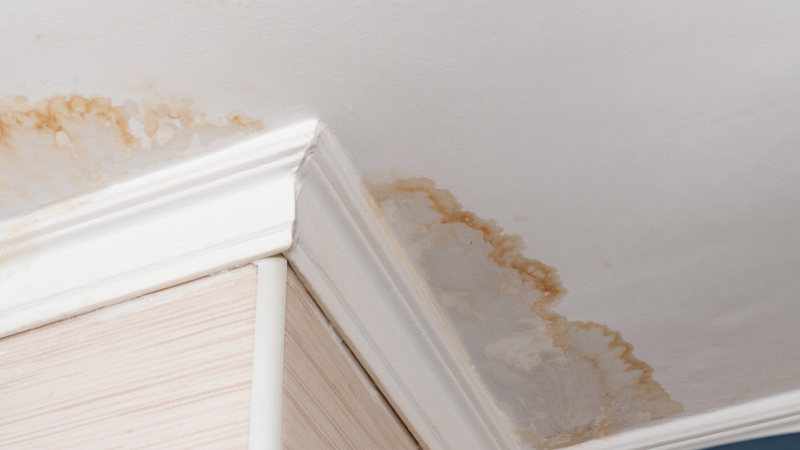Here below yow will discover additional sensible material all about How to Prevent Bathroom Water Damage.

The bathroom is very susceptible for moist buildup as well as potential water damages due to the constant use of water in it. This article uses easy examination methods to help identifying water damage hazards.
The regular use of water in the shower room makes it incredibly at risk for damp buildup as well as possible water damage. By inspecting it on a regular basis, you can decrease water relevant damages.
The adhering to set of examinations is easy to do and must be done once in every 3 months in order to keep your restroom healthy as well as to stop potential water problems caused by the tub, the shower, pipeline joints and plumbing, sinks, closets, and the bathroom
Do not forget performing these assessments and be extensive while executing them. Keep in mind that these basic examinations can save you a great deal of cash by offering very early signs for water damage
Tub and also Shower
The shower and tub need unique attention as well as upkeep. Examine the tiles and replace if split. See to it that there is no missing cement between the tiles. Examine and also replace broken caulking at joints where the wall surfaces meet the floor or the tub. Obstructed drains as well as pipelines problems will protect against the bathtub from drying as well as might indicate severe issues underneath the bath tub. Speak with an expert quickly to prevent structural damages. Take notice of discolorations or soft areas around the tub wall surfaces as they might indicate an interior leakage.
Plumbing
Signs for water damages are tough to detect because a lot of pipelines are mounted inside the walls.
Pay special interest to floor covering as well as wall surfaces dampness and stains as they may suggest an undetectable plumbing trouble. Examine dampness levels in adjoining rooms as well.
Sinks as well as Cabinets
Sinks as well as cupboards are revealed to dampness and also moisture day-to-day and are frequently overlooked. Inspect routinely under the sink and on the countertop above it. Repair any drip in the trap as it may suggest drain problems. Take a look around the sink, sluggish draining pipes may indicate a blocked drain. Replace sink seals if they are cracked or loose.
The Commode
The commode is an at risk water joint. Inspect the water lines as well as look for leaks around the toilet seat, in the hose pipe, and under the water tank. If you detect any indicators of dampness on the flooring around the bathroom, look for leaks in the toilet rim and container seals.
Realize that hanging commode dish deodorants enhances the chances for clogs.
TIPS TO PREVENT WATER DAMAGE IN THE BATHROOM
The average household uses approximately 80-100 gallons of water per person per day. For a family of 4, that's almost 2,500 gallons of water a week! The largest portion of this consumption comes from bathroom use. Flushing the toilet uses the most water, followed by taking a shower or bath. With that much water running through the home, water damage in the bathroom is bound to happen. Knowing how to spot signs of a water leak is essential to preventing long-term damage. This guide provides you with tips to reduce the impact of water damage on your bathroom.
CAUSES OF BATHROOM WATER DAMAGE
- Pipe breaks are the most common cause of water damage we see in our daily jobs. The age of a pipe plays a large role in a pipe break as well as corrosion. Over time, the metal begins to break down, allowing water to escape. Frozen pipe breaks are also a concern in the winter months.
- Toilet overflows caused by paper products or children flushing inappropriate items.
- Degraded caulking around the toilet or bathtub can allow water seepage, sometimes behind the fixture, into the subfloor or walls.
- Condensation forms when the water in a pipe is cooler than the air temperature. Beads of water form on the exterior of the pipes, sometimes so much so that the water begins to drip and pool below.
- Sink or shower backups created by poor drainage.
HOW TO PREVENT WATER DAMAGE IN YOUR BATHROOM
- Inspect your toilet supply line for worn or frayed hoses and replace them as needed.
- Winterize your plumbing to prevent a frozen pipe break.
- Use vent fans to prevent condensation that can lead to mold growth.
- Routinely check and replace degraded caulking around your toilet or bathtub.
- Increase the temperature in your toilet tank and insulate your pipes during the warm summer months to keep condensation from forming.
- Use child safety locks on the toilets.
- Flush only toilet paper. "Flushable" wet wipes are actually not good for your plumbing system. Additionally, feminine hygiene products should not be flushed.
- Prevent water from escaping the tub or shower. Make sure shower curtains are in good condition. Inspect shower doors and replace the seal strip if necessary.
- Wipe up any water that accumulates on the floor and use bath mats. Water left to sit can cause damage to the tiles and flooring.
- Refrain from using bath products containing heavy oils to avoid a clogged drain.

I am very curious about Looking for Signs of Water Damage in the Bathroom and I'm hoping you liked the entire blog post. Don't hesitate to take a moment to share this entry if you enjoyed reading it. Thanks for your time. Visit again soon.
Get An Estimate
Comments on “Just How to Avoid Bathroom Water Damage”